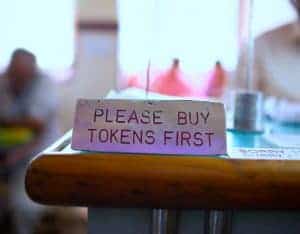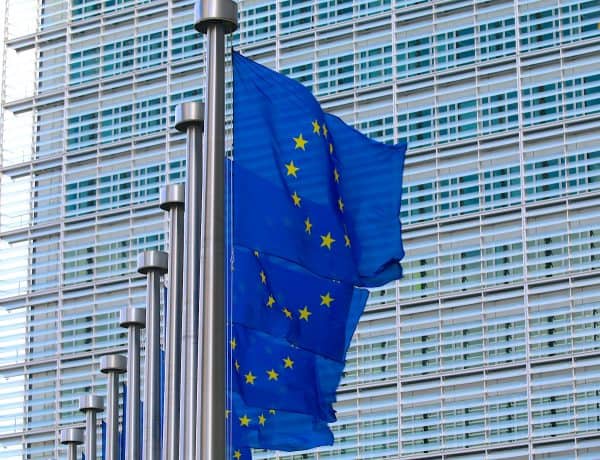MiCar: Markets in Crypto-Assets Regulation.
Everyone seems to forget that blockchain is a database software at its core; better database software to be sure because it makes digitally unique items (known as “crypto-assets” or “digital assets”) possible in a transparent, auditable, and secure system, but still a database. As such, a crypto-asset can be anything, whether tangible or intangible. So how should we regulate them?
The European Commission recently proposed its new Markets in Crypto-Assets Regulation (“MiCAR” or the “Regulation”). While the document attempts a credible outline for the regulation of what people perceive to be a new asset class, it falls short because it seeks to treat as monolithic the wide variety of possible crypto-assets. Moreover, the Regulation “financializes” all of those assets by seeking to regulate them under the principles of financial services rather than recognizing the functions and features of each. Commenters and the European Parliament should alter MiCAR and tailor its proposed approach only “financial tokens”, as a new concept introduced by this article.
MiCAR in Summary: MiCAR applies principles and concepts from the regulation of financial instruments and markets, and associated issuers, intermediaries, and other participants, to an extremely broadly defined class of items it calls “crypto-assets.” The defining characteristic of crypto-assets is that they are items created and implemented on any distributed ledger technology (“DLT”, which includes blockchains). No other commonality is necessary for an item to qualify. In defiance of public statements and usual methods of regulation, it is the technology that matters to how crypto-assets are regulated, not an understanding of the item itself or its implementation.
The Regulation specifically exempts from the definition of crypto-assets those items that are already subject to regulation as financial instruments under existing European Directives (MiFID, MiFIR, etc.), appropriately recognizing that a stock, bond or derivative created using distributed ledger technology does not lose its essential character and so should retain the same legal and regulatory classification. The Regulation also defines several subcategories of crypto-assets that are subject to additional requirements on their issuers and offerings.
This article poses five key questions about MiCAR for the Commission and market participants to consider when evaluating the proposal and possible amendments. It also provides ideas for how to successfully address the questions through changes to the drafting, particularly by limiting MiCAR to “financial tokens” in light of its apparent regulatory parentage.
Question 1: Why choose financial services regulatory concepts as the basis for MiCAR?
Recital 2 at the beginning of MiCAR introduces the idea that crypto-assets are a type of financial instrument:
“In finance, crypto-assets are one of the major DLT applications.”
Nevertheless, MiCAR breaks the link between crypto-assets and financial instruments in Article 2, which specifically exempts assets that are financial instruments subject to the Markets in Financial Instruments Directive (“MiFID”) and other relevant financial services Directives.
 We are therefore left to understand that crypto-assets is a category of items that includes both (heretofore unregulated) assets of a financial nature but also all manner of non-financial assets and items purely due to the usage of DLT. This conclusion is buttressed by the subcategories defined in the Regulation: asset-referenced tokens (“ARTs”), e-money tokens, and utility tokens.¹ The first two would appear to include, but not be limited to, assets of a financial nature, because an ART can be a digital representation of any type of commodity. Utility tokens as defined appear generally to be non-financial in nature and would include certain types of loyalty points and in-game items in computer games such as swords, wands, and treasure chests as well as any other ticket or membership card usable or redeemable with its issuer so long as it utilizes DLT (such as coupons at grocery stores or gym membership cards).
We are therefore left to understand that crypto-assets is a category of items that includes both (heretofore unregulated) assets of a financial nature but also all manner of non-financial assets and items purely due to the usage of DLT. This conclusion is buttressed by the subcategories defined in the Regulation: asset-referenced tokens (“ARTs”), e-money tokens, and utility tokens.¹ The first two would appear to include, but not be limited to, assets of a financial nature, because an ART can be a digital representation of any type of commodity. Utility tokens as defined appear generally to be non-financial in nature and would include certain types of loyalty points and in-game items in computer games such as swords, wands, and treasure chests as well as any other ticket or membership card usable or redeemable with its issuer so long as it utilizes DLT (such as coupons at grocery stores or gym membership cards).
In light of this mix of financial and non-financial items, it is curious that the Commission chose to borrow so heavily from the concepts and requirements in its financial regulatory directives such as MiFID and the Prospectus Directive when proposing the rules governing both issuers of tokens and “crypto-asset services providers” (“CASPs”). No other activity in the Single Market (including the Digital Single Market) blurs these lines in this way for the very good reason that the substantive differences between financial assets and commercial or recreational items are significant.² Put another way, the simple fact that loyalty points, in-game items, or physical world commodities use DLT instead of another technology does not represent a change to the item’s essential character, utilization, valuation, or legal classification.
The drafters of MiCAR do not explain why the Regulation forces such a result. We should be skeptical about embracing financial-type regulation of the “issuance” and trading for non-financial items solely based on the underlying technology. Nor should this proposed paradigm shift occur without a full understanding of the consequences for the many different non-financial items that would be caught.
Fortunately, there is a relatively simple drafting fix. MiCAR should make a distinction between crypto-assets that are financial in nature versus those that are not, and only regulate financial crypto-assets through a defined term “financial tokens”. The definitions of ARTs and EMTs are a good start but because bitcoin likely is not covered by either definition and because it is likely considered financial in nature (either as a means of payment or as an investment), a broader definition of a financial token would be necessary. Any item not meeting the definition of a financial token would not be subject to MiCAR in the same way that MiFID financial instrument tokens and nonfungible tokens are exempt.
Question 2: Why make loyalty points subject to MiCAR when they use blockchain technology?
 The technology-based regulation proposed by MiCAR comes into stark relief when one looks at various existing digital items and see how they fare if moved to blockchain technology. Loyalty points such as airline miles provide a useful illustration. They are an intangible asset that are created, added, and subtracted on the airline’s computer database. They do not exist in the physical world like an orange or gold coin. They are an easy use case for blockchains or other DLT, which would provide digital uniqueness for each airline point allowing the holder and the airline to know exact balances and transactions at any moment and ensuring against double-spends and hacks that change balances or record incorrect transactions and undermine the system’s integrity.
The technology-based regulation proposed by MiCAR comes into stark relief when one looks at various existing digital items and see how they fare if moved to blockchain technology. Loyalty points such as airline miles provide a useful illustration. They are an intangible asset that are created, added, and subtracted on the airline’s computer database. They do not exist in the physical world like an orange or gold coin. They are an easy use case for blockchains or other DLT, which would provide digital uniqueness for each airline point allowing the holder and the airline to know exact balances and transactions at any moment and ensuring against double-spends and hacks that change balances or record incorrect transactions and undermine the system’s integrity.
MiCAR, however, would create an artificial dividing line such that airline points that sit on a non-DLT database remain unhindered by MiCAR whilst moving to a DLT database would suddenly result in the points being subject to extensive requirements, on the airline as issuer and on anyone involved in providing trading, custody, execution, arranging or advisory services with regard to the points (all types of CASPs). Imagine a travel agent advising you to use your points on a flight or hotel but needing to be registered as a CASP for providing such services.
This arbitrary dividing line of DLT or not fails one of the key principles regularly invoked by policymakers and regulators: regulation of an item should be technology-neutral and focused on the essential nature of the item itself (its functions and features). Airline points on a handwritten ledger, a centralized database, or a DLT are still airline points because their essential nature remains the same. This important concept of determining classification based on the item’s functions and features instead of its underlying technology applies not only when deciding on the appropriate regulatory regime but also in other critical matters such as the item’s utilization and valuation.
The MiCAR as proposed contradicts this basic principle apparently because airline points on a DLT likely would be more easily transferable; after all, DLT does make the transfer of digital items secure and certain, mimicking the movement of physical items. This rationale, however, does not withstand scrutiny. First, a technology newer than DLT would necessitate an entirely new regulatory regime, or at least a substantive rethink of MiCAR.
Second, the justification of easy (or easier) transferability of items might lead to the conclusion that faster delivery of real-world items (oranges, gold coins, etc.) means that they too should be subject to these financial services-like requirements. Any marketplace, whether physical or digital, where items are sold, such as a farmer’s market, a grain or cattle exchange or online markets like eBay, Etsy, Amazon, and Alibaba might be CASPs because the logistics challenges are solved. As for digital items, their transfer is already easy even without blockchain. Anyone who has received a digital gift card knows how easy it is to both use and transfer.
Fortunately, the answer to these issues is the same solution proposed to Question 1: MiCAR should define financial tokens and only apply to them and not to everything that can sit on DLT.
Question 3: Are vintage Air Jordans, when represented and traded on blockchains, a crypto-asset under MiCAR?
 Yes! Under MiCAR, any real-world or tangible asset digital represented on DLT is a crypto-asset. Once again we are faced with MiCAR’s counterintuitive application of financial services regulation to the simple representation of a familiar item that no one considers as financial in nature.
Yes! Under MiCAR, any real-world or tangible asset digital represented on DLT is a crypto-asset. Once again we are faced with MiCAR’s counterintuitive application of financial services regulation to the simple representation of a familiar item that no one considers as financial in nature.
One might argue that MiCAR contemplates this result and adjusts for it by exempting nonfungible tokens (those that are “unique and not fungible with other crypto-assets”). This argument, however, elevates form over substance because it relies entirely on the implementation of the digital representation. Programmers could easily create the Air Jordan tokens as either unique or not: think of a token redeemable for a particular pair of Air Jordans contrasted with a token redeemable for any pair of Air Jordans.
By now, dear reader, you know my proposed solution. As a financial services regulation, MiCAR should be limited to financial tokens.
Question 4: How does MiCAR treat hybrid crypto-assets, that is, those with multiple functions and features?
One can conceive of a crypto-asset with features and functions that might put it for some purposes in the ART category and for other purposes in the utility token category. For example, a token could be designed by an issuer to have a stable value against gold but also to be redeemable at the issuer for certain goods or services. Another possibility is a crypto-asset that is both a utility token and a MiFID financial instrument.
There are many possible permutations due to the varied functionality of crypto-assets so the financial tokens solution posited in this article would not be immune to multi-functional tokens.
MiCAR could easily address these situations by indicating that the more comprehensive regulatory regime applies. Thus, if the crypto-asset has any functions and features that make it a MiFID financial instrument, MiCAR does not apply and MiFID takes over. If the utility token also has the functions and features of an ART or financial token, it would be regulated as such.
Question 5: What happens when CASP also is the “issuer” of a crypto-asset?
A CASP that issues one or more crypto-assets (or, in a better future, financial tokens) is subject to the requirements relevant to its activities as a CASP and to its activities as an “issuer”. There is not too much overlap or conflict here. The drafters should consider clarifying that a single legal entity can conduct both activities but also that the activities might be done by different affiliates. In both situations, the Regulation should mandate appropriate disclosures about affiliations, conflicts of interests, related party transactions, and similar matters, in addition to the existing requirements.
♦♦♦
These questions should not detract from the overall fine work in creating the proposed MiCAR. There is much to recommend it, including core principles of transparency, adequate and accurate disclosures, avoiding conflicts of interests, honesty, and fair dealing. The next version, however, should turn this regulation towards financial tokens and spare the broader world of assets and items that DLT enhances through its core features.
Others will no doubt comment on many of the provisions and the process of consultation and response will be important in yielding what I hope will remain a carefully considered, practical regulatory framework that shows Europe’s leadership in this important area.
 Lee A. Schneider is General Counsel at Block.one, one of the world’s largest blockchain companies and creator of the EOSIO blockchain protocol. In that role, Schneider is responsible for various aspects of the legal function as well as the company’s government affairs initiatives. He joined Block.one after leading the blockchain, Fintech, and broker-dealer practices at two major international firms. Lee has been recognized as one of the leading voices in blockchain-related regulation and compliance and has played a role in structuring several of the largest and most successful blockchain-related projects. Schneider co-hosts the Appetite for Disruption podcast with Troy Paredes and is the contributing editor for the Chambers and Partners Fintech Practice Guide. He is the contributing editor of the Chambers and Partners 2019 Fintech Practice Guide. All views expressed are in his personal capacity and reflect only his personal views and not those of Troy, Chambers, or block.one or its directors, officers or employees. His views do not constitute legal, investment or any other type of advice.
Lee A. Schneider is General Counsel at Block.one, one of the world’s largest blockchain companies and creator of the EOSIO blockchain protocol. In that role, Schneider is responsible for various aspects of the legal function as well as the company’s government affairs initiatives. He joined Block.one after leading the blockchain, Fintech, and broker-dealer practices at two major international firms. Lee has been recognized as one of the leading voices in blockchain-related regulation and compliance and has played a role in structuring several of the largest and most successful blockchain-related projects. Schneider co-hosts the Appetite for Disruption podcast with Troy Paredes and is the contributing editor for the Chambers and Partners Fintech Practice Guide. He is the contributing editor of the Chambers and Partners 2019 Fintech Practice Guide. All views expressed are in his personal capacity and reflect only his personal views and not those of Troy, Chambers, or block.one or its directors, officers or employees. His views do not constitute legal, investment or any other type of advice.


